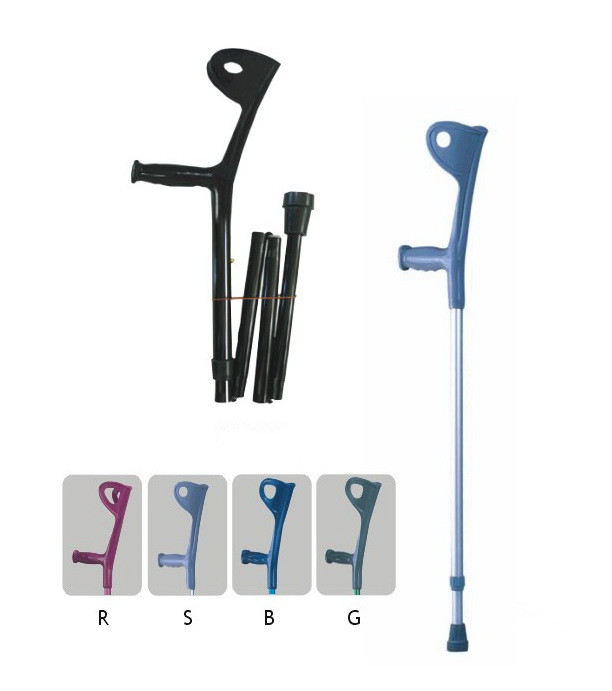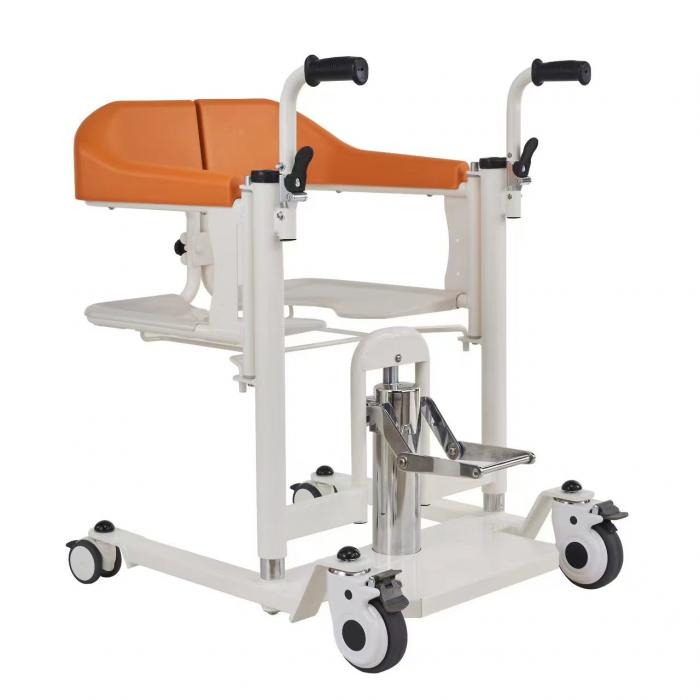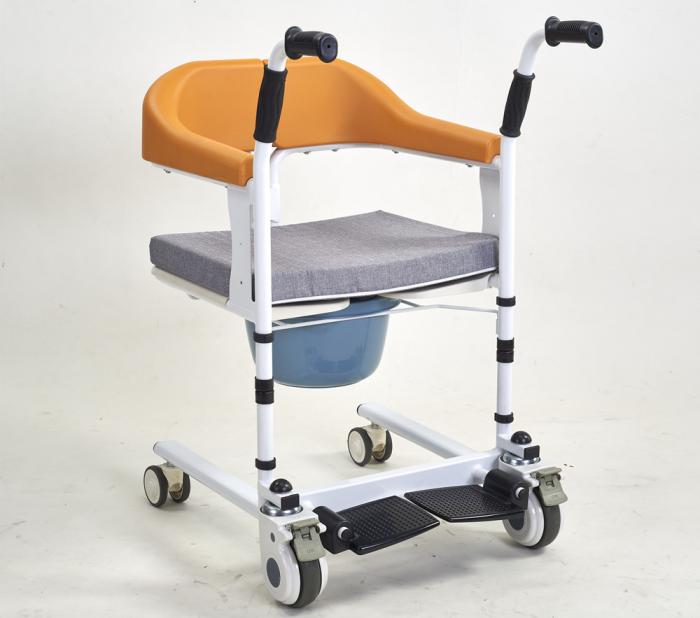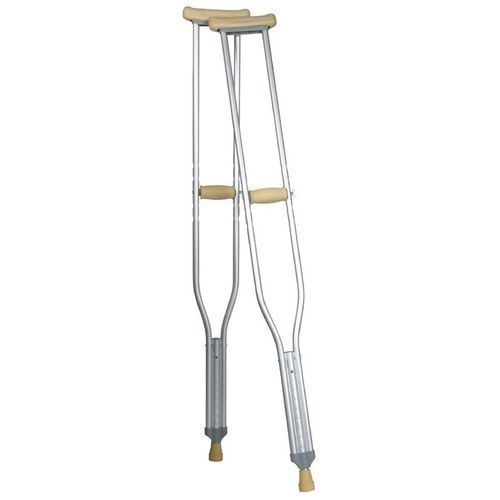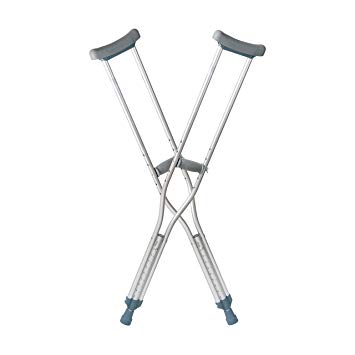| Name: | European Style Forearm Crutches |
|---|---|
| Model No.: | BES-WA05 |
| Material: | Aluminum |
| Product Name: | Forearm Crutch |
| Brand: | BESCO |
| Keywords: | Forearm Crutches,Elbow Crutches,European Style Forearm Crutches,Folding European Style Forearm Crutches |
| Sample: | Available |
| MOQ: | 100 units |
| Payment Term: | T/T in advance |
| Country of Original: | China |
| Weight Capacity: | 110 kgs |
| Stock: | Available |
| Factory Address: | Changyuan,China |
| Office: | Zhengzhou,China |
Products Description
European Style Forearm Crutches

Foldable European Style Forearm Crutches
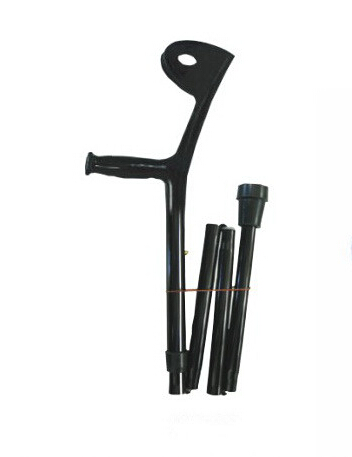
Forearm crutches, also known as elbow crutches or Lofstrand crutches, are walking aids with a cuff that encircles the user's forearm, a handle for gripping, and a rubber tip at the end of the shaft. They are designed to distribute the user's weight across the forearms and wrists rather than under the armpits, offering greater comfort, stability, and mobility for people with long-term disabilities, injuries, or balance issues.
Key Features
Forearm Cuff:
A pivoting or adjustable cuff made of plastic or flexible material fits around the user's forearm, providing stability and dispersing weight.
Contoured Hand Grips:
Padded, ergonomic grips are designed to reduce pressure on the hands and wrists, increasing comfort for prolonged use.
Adjustable Height:
The crutches are height-adjustable, allowing for a customized fit and improved posture.
Durable Construction:
Typically made from lightweight, high-strength aluminum, they are built for long-term, dependable use.
Rubber Tips:
Non-slip rubber tips on the base of the crutches improve traction and prevent slipping on various surfaces.
Benefits
Comfort:
They reduce discomfort compared to underarm crutches by avoiding pressure on the sensitive underarm area.
Stability:
The wider support base and forearm cuff contribute to better balance and stability.
Mobility:
Forearm crutches are often easier to use on stairs and in complex environments, allowing for greater clearance and maneuverability.
Posture:
They promote better posture and reduce the risk of nerve damage that can occur with standard underarm crutches.
Who Uses Them?
Forearm crutches are ideal for individuals who need long-term support, including those with chronic conditions like Multiple Sclerosis or Polio, recovery from injuries, or difficulties with balance. They are also a good option for people who tire easily or need greater independence in daily activities.
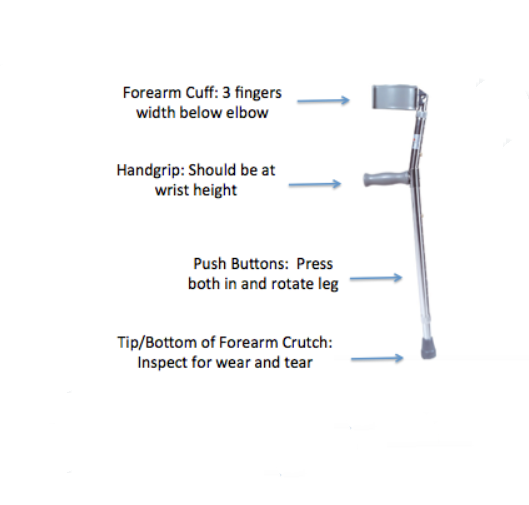
Forearm crutches (or elbow crutches) provide support through a cuff around the forearm and a handgrip, used for long-term disabilities or short-term injuries when more upper body strength and practice is required for stable mobility, especially on stairs and uneven surfaces. Proper use involves adjusting the handgrip to wrist level and the cuff a few inches below the elbow, then using a three-point gait with crutches placed forward, shifting weight, and bringing the good leg forward to meet them, avoiding any weight on the injured leg.
When to Use Forearm Crutches
Forearm crutches are suitable for individuals who:
Require long-term or permanent mobility support.
Have conditions affecting their hand or grip strength, such as cerebral palsy or arthritis.
Are young, but have trouble with balance.
Need to conserve energy when walking.
Are able to master the skills needed for their use.
How to Fit Forearm Crutches
Wear your regular shoes: to ensure proper length.
Stand upright, with your arms hanging loosely at your sides.
Measure the handgrip: to be level with your wrist, bending your elbow about 15-30 degrees.
Position the cuff: about one to four finger-widths below your elbow.
Ensure the cuff's open end faces away from your body .
Verify the button clicks: when you adjust the crutch length.
How to Use Forearm Crutches
Non-Weight Bearing Gait:
Place both crutches one step-length in front of you, shoulder-width apart.
Bring your "good" leg forward to meet the crutches.
Shift your weight to your arms, bringing your body forward.
Repeat the process by advancing the crutches and your "good" leg again.
Three-Point Gait (for some weight-bearing):
Place both crutches in front of you.
Step forward on your uninjured leg, bringing it in line with the crutches.
Step through with the injured leg (or the leg needing less weight).
Use the crutches to support your weight, maintaining an upright posture.
Key Considerations
Avoid Armpit Pressure: Do not put weight on your armpits, as this can cause pain or nerve damage.
Balance: Forearm crutches require practice and upper body strength to master.
Terrain: Once mastered, forearm crutches make stairs and uneven terrain easier to navigate.
Posture: They help maintain a natural and upright posture, which can reduce back pain.
